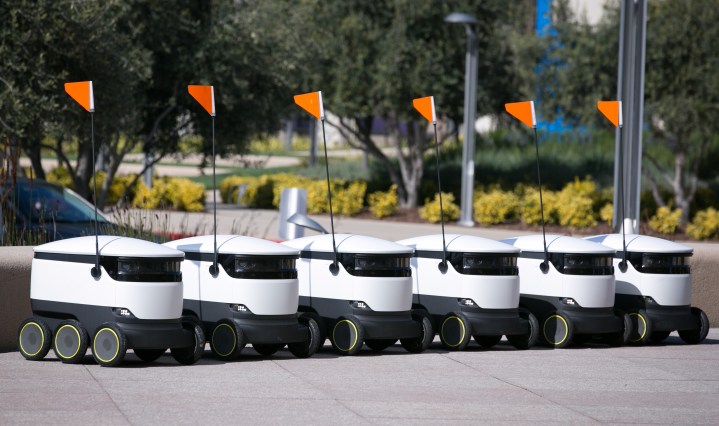
Pioneering autonomous delivery robot company Starship Technologies is coming to a whole lot more university campuses around the U.S. The robotics startup announced that it will expand its delivery services to 100 university campuses in the next 24 months, building on its successful fleets at George Mason University and Northern Arizona University.
Its robots will commence deliveries at the University of Pittsburgh on August 20 and expand to Purdue University on September 9, before coming to dozens of other universities in the coming months. The food-delivering bots will be in operation from 8 a.m. to 2 a.m. daily.
“The university demographic is great,” Starship Technologies CEO Lex Bayer, a former AirBnB executive, told Digital Trends. “Young people tend to use technology a lot. They’re also used to expecting things that are on-demand. They’re digital natives who are predisposed to technology that works this way. Most of these universities do not currently have any delivery options available. This is often because campuses are set up in a way that makes it difficult for traffic to move through them. The food areas can be away from the roads, and dorms can be difficult to access. That makes it difficult for traditional delivery companies to service this market.”
Starship’s delivery model means that students can place a wide variety of food orders via app and signal exactly where they want their food to be delivered. Their meal or snack will then arrive inside a delivery bot, which can be unlocked using a mobile app. Delivery fees vary by locations, but are typically $1.99 or less.
This isn’t Starship’s only announcement. The company has also just completed 100,000 commercial deliveries, and racked up an additional $40 million in funding as well. That brings its total haul to $85 million. According to its creators, Starship Technologies’ zero-emission robots have now travelld more than 350,000 miles, crossed 4 million streets, and delivered some 6,000 pizzas, 7,000 gallons of milk, 8,000 coffees, 9,000 sushi rolls, and a whole lot more.
You can expect those numbers to increase dramatically as Starship continues to arrive on more and more campuses (alongside other locations) around America.


